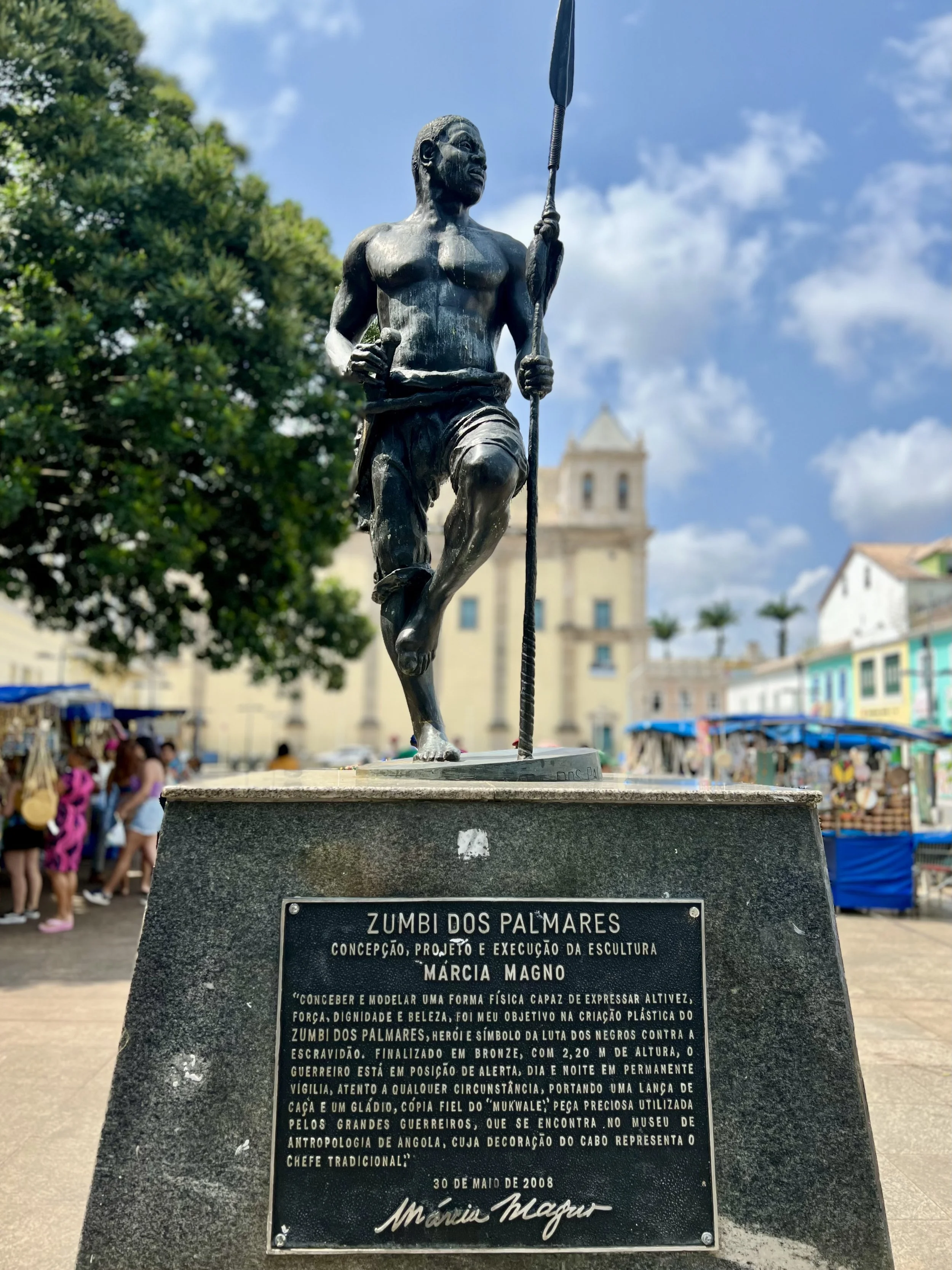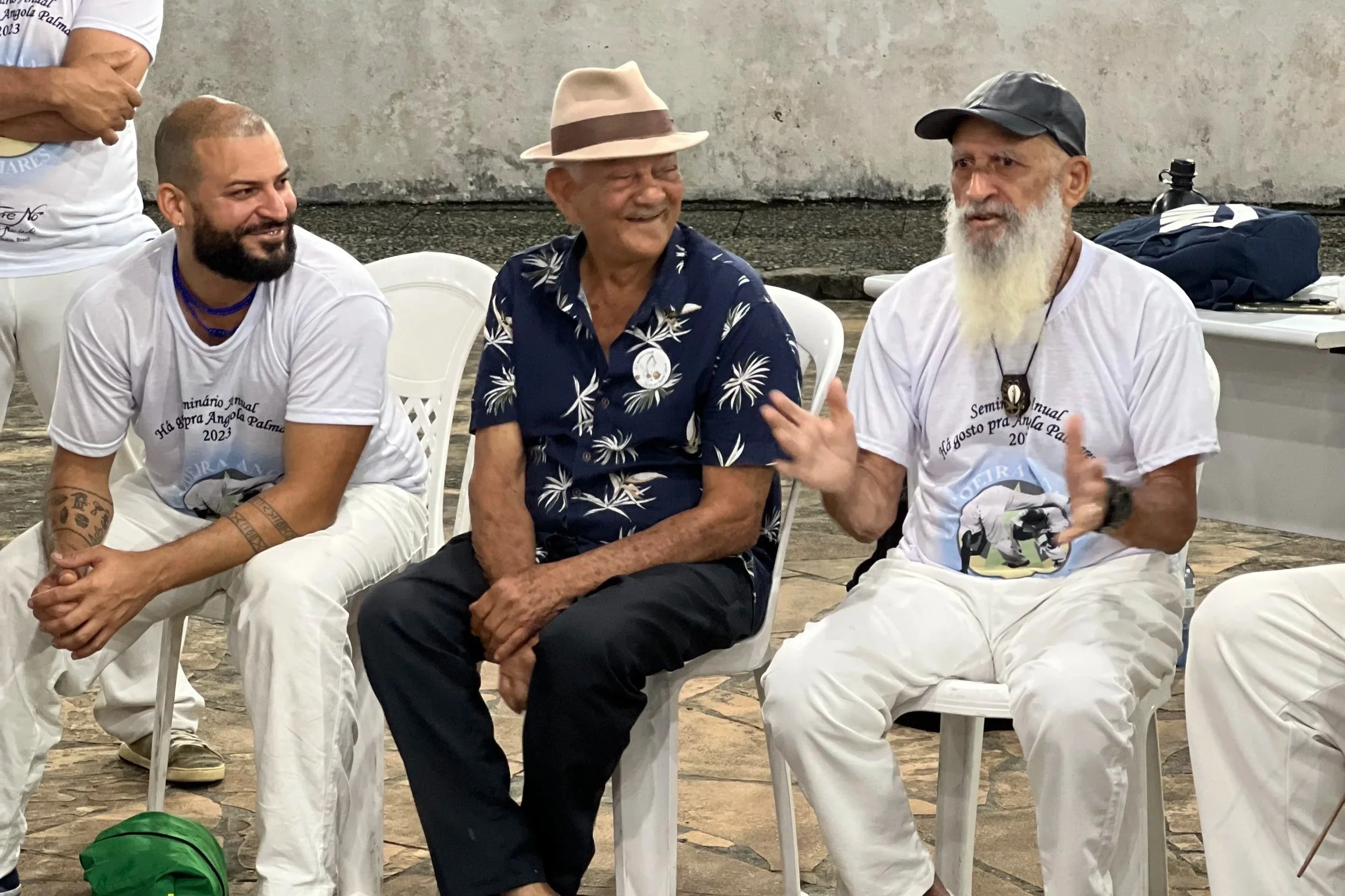What Is Capoeira Angola?
Capoeira Angola: Roots of Resistance and Rhythm
Capoeira Angola is one of the oldest and most profound forms of Capoeira, a martial art and cultural practice created by enslaved Africans in Brazil. Its roots reach back to Central and West Africa, especially among Bantu-speaking peoples from regions that are now Angola, Congo, and Mozambique.
These communities carried with them rich traditions of movement, rhythm, and spirituality. Through communal dances like n’golo and ritual games that blurred the lines between art, play, and combat, they expressed philosophy through motion and survival through rhythm.
When millions of Africans were forcibly brought to Brazil between the 16th and 19th centuries, they transformed these ancestral practices into a new language of resistance. In Bahia, particularly around Salvador, Capoeira emerged in the senzalas (slave quarters), in the port markets, and later in the terreiros, spaces where African culture continued to thrive despite colonial repression.
Birth in Resistance
From the 1500s through the 1800s, Capoeira developed among enslaved Africans and free Blacks as a way to train the body, build solidarity, and resist oppression. By the 18th century, Capoeira was already known in cities like Rio de Janeiro, Recife, and Salvador.
During slavery, it was often disguised as dance to avoid punishment. The circular formation, the singing, and the music all masked its martial core. Songs carried stories of rebellion and resilience, with heroes like Zumbi dos Palmares, leader of the free African community of Palmares (1605–1695), becoming lasting symbols of freedom.
Praça da Sé, Salvador, Região Metropolitana de Salvador, Brazil
Long before Capoeira was formalized in the cities, Africans who escaped enslavement created independent settlements hidden in forests and mountains called quilombos. The most famous, Quilombo dos Palmares, lasted for nearly a century in northeastern Brazil and sheltered tens of thousands of people. Palmares’ main stronghold fell in 1694, and Zumbi was killed on November 20, 1695. Estimates of its population range between eleven and twenty thousand. Within these liberated spaces, African traditions could flourish without disguise.
The rhythmic combat dances brought from Central Africa, such as n’golo and batuque, were practiced freely and adapted to new realities. They trained the body for defense and served as expressions of unity and celebration. Oral histories suggest that the techniques and philosophies that would later define Capoeira took shape within these free communities, blending agility, rhythm, and deception into a living form of resistance.
Even after the abolition of slavery in 1888, authorities viewed Capoeira as dangerous. Brazil’s 1890 Penal Code criminalized capoeiragem under Article 402. In 1937, Mestre Bimba’s academy received official recognition from Bahia’s education authorities, which helped shift public perception. The specific anti-capoeira provisions of the 1890 Code were removed when the new Penal Code took effect in 1942.
The First Capoeira Schools
By the early 20th century, Capoeira had survived centuries of persecution but was still practiced mostly in the streets and peripheries of Bahia. Two men changed that history forever, each in his own way.
Mestre Bimba and Capoeira Regional (1932)
In 1932, Mestre Bimba (Manoel dos Reis Machado) opened the Centro de Cultura Física Regional in Salvador, the first recognized Capoeira school in Brazil. He sought to give Capoeira social legitimacy and protect it from stigma by creating sequences, uniforms, and formal classes. His new style, Capoeira Regional, blended traditional Angola with other fighting systems, emphasizing speed, upright posture, and athletic precision.
By 1937, his academy was officially recognized by the Bahian Secretary of Education, a pivotal step toward Capoeira’s acceptance as a legitimate cultural practice.
Mestre Pastinha and Capoeira Angola (1941)
In 1941, Vicente Ferreira Pastinha, known as Mestre Pastinha, founded the Centro Esportivo de Capoeira Angola (CECA)in Salvador’s Pelourinho. Pastinha sought to preserve the older, ritualistic form he had first learned as a boy from Mestre Benedito, an elder capoeirista who taught him the importance of patience, cunning, and respect in the game.
His philosophy was simple yet profound: “Capoeira é tudo que a boca come.” (“Capoeira is everything the mouth eats.”) He taught that the jogo should be a dialogue rather than a fight, a conversation guided by rhythm, strategy, and grace. Dressed in yellow and black, the colors of his favorite soccer club Ypiranga, Pastinha’s students became the guardians of the traditional style now known as Capoeira Angola.
Expansion and Recognition
From the 1950s through the 1970s, Bahia became the heart of Capoeira Angola’s preservation. Mestre Pastinha’s academy in the Pelourinho drew artists, writers, and musicians who began to recognize Capoeira as an art form and a cultural treasure.
Among his many students, Mestre João Pequeno and Mestre João Grande carried the lineage forward. After Pastinha’s death in 1981, they continued to teach in Bahia and abroad, ensuring that the tradition remained alive for new generations.
Around the same time, other masters were shaping the future of Angola in their own neighborhoods. Mestre Nô (Norival Moreira de Oliveira), born in 1945, began practicing in the 1950s and trained under some of Bahia’s great elders. In 1979, he founded Grupo Capoeira Angola Palmares in Bahia, dedicating his life to preserving the values of discipline, respect, and community that define Angola.
From the Streets to the World
By the 1980s, Capoeira Angola had spread far beyond Bahia. Rodas appeared in Europe, North America, and across the African diaspora. In 2014, UNESCO inscribed the Capoeira circle on the Representative List of the Intangible Cultural Heritage of Humanity, honoring its role as both an art form and a symbol of resistance.
Today, groups such as Capoeira Angola Palmares, carrying the teachings of Mestre Nô and Mestre Nozinho, continue this lineage across continents, including here in Orlando. The essence remains the same: rhythm, respect, strategy, and the power to transform struggle into expression.
Mestre Nozinho, Mestre Boca Rica, Mestre Nô at Forte de Santo Antônio Além do Carmo, Salvador, Região Metropolitana de Salvador, Brazil August 2023
The Heartbeat of the Roda
At the center of every Capoeira Angola roda is the berimbau. Its sound sets the rhythm, pace, and character of the game.
Each toque creates a different dialogue between the players, sometimes slow and full of trickery, sometimes sharp and fast. The pandeiro, atabaque, agogô, and ganza complete the orchestra, while the chorus rises in call-and-response songs that teach history, honor the ancestors, and keep the energy alive.
These songs are oral archives. They carry the memory of survival, the humor of the people, and the lessons of the old masters. To sing in the roda is to remember, to resist, and to belong.
Closing Reflection
Capoeira Angola is more than a martial art. It is living memory, an embodied record of African survival, creativity, and spirit. From the slave ships to the quilombos, from the streets of Salvador to Mestre Pastinha’s Pelourinho, and from Bahia to Orlando, it continues to teach resilience and freedom through movement and rhythm.
To step into the roda is to enter that living history. Each ginga becomes a conversation with the past, a reminder that resistance can be graceful, that struggle can dance, and that freedom can sing.


